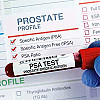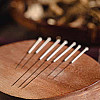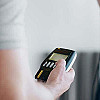Different types of echocardiography
Ask the doctor
A friend recently had what his doctor called a "3D echocardiogram." How is that different from a standard echocardiogram?Most echocardiograms are done by moving the ultrasound probe over the front of the chest, or thoracic area. This is called a transthoracic echocardiogram (TTE). But the ultrasound probe can also be put on a thin, flexible instrument that's guided down the esophagus (the tube that carries food from your mouth to your stomach). The esophagus is just behind the heart, so the sound waves don't have to travel through the skin, muscle, bone, and tissue of the chest. This procedure, called a transesophageal echocardiogram (TEE), provides a closer look at certain parts of the heart and its valves, such as the mitral valve. The view is also better for detecting blood clots in the heart, such as those that can form in the left atrium from atrial fibrillation. Before these procedures, people get a numbing medicine sprayed on the back of the throat, as well as an intravenous injection of drugs to make them relaxed and sleepy.
To continue reading this article, you must log in.
Subscribe to Harvard Health Online Plus (HHO+) to unlock expert-backed health insights, personalized tools, and exclusive resources to feel your best every day.
Here’s what you get with your HHO+ membership:
- Unlimited access to all Harvard Health Online content
- 4 expertly curated newsletters delivered monthly
- Customized website experience aligned to your health goals
- In-depth health guides on topics like sleep, exercise, and more
- Interactive features like videos and quizzes
- Members-only access to exclusive articles and resources
I’d like to subscribe to HHO+ for $4.99/month to access expert-backed content to help make smart, informed decisions about my well-being.
Sign Me UpAlready a member? Login ».
Disclaimer:
As a service to our readers, Harvard Health Publishing provides access to our library of archived content. Please note the date of last review or update on all articles.
No content on this site, regardless of date, should ever be used as a substitute for direct medical advice from your doctor or other qualified clinician.















